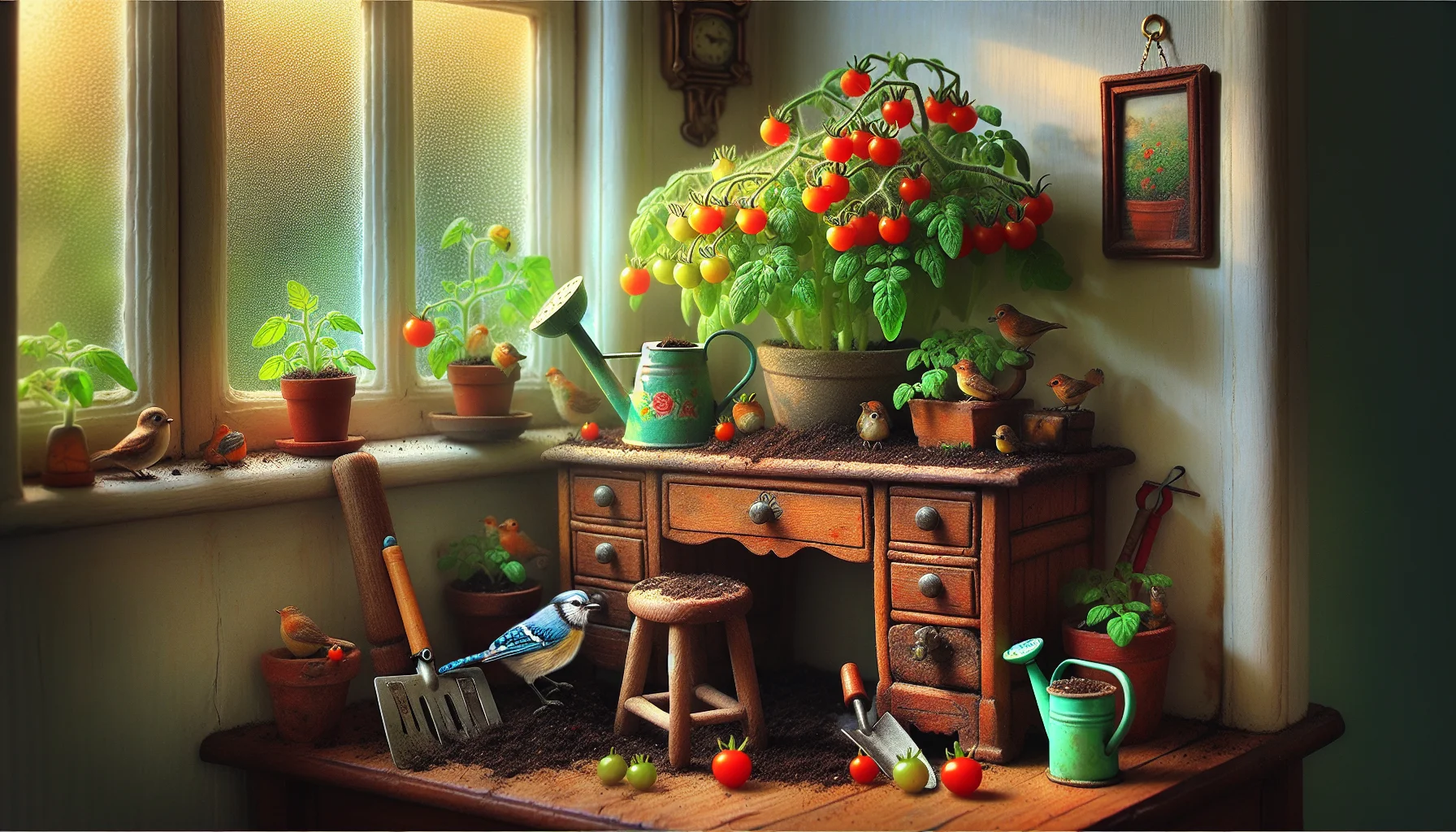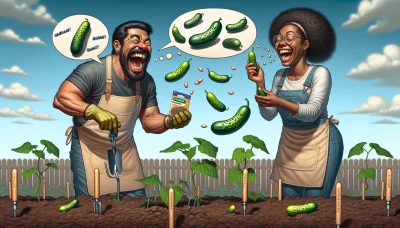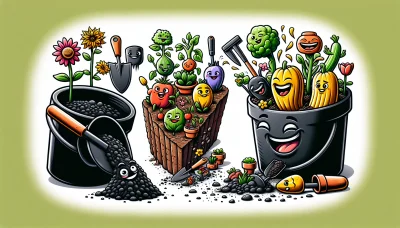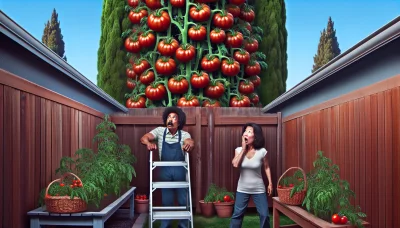Growing cherry tomatoes indoors Quiz
Test Your Knowledge
Question of
Growing Cherry Tomatoes Indoors: A Comprehensive Guide
Growing cherry tomatoes indoors can be an incredibly rewarding experience for any plant enthusiast or home gardener. Not only does it allow you to enjoy fresh, flavorful tomatoes regardless of the weather outside, but it also brings a touch of greenery and vitality to your indoor space. Indoor tomato gardening can be a fun project that beautifies your home and provides the joy of harvesting your own produce. The process of nurturing these plants from seed to fruit teaches patience, care, and the rewards of diligent gardening. Moreover, cherry tomatoes grown indoors can be free from the pesticides and chemicals often found in store-bought varieties, making them a healthier option for you and your family.
Choosing the Right Varieties
- Sweet Million
- Gold Nugget
- Tiny Tim
- Balcony
- Red Robin
Setting Up Your Indoor Garden
To grow cherry tomatoes indoors, you will need a few essential items and to ensure certain conditions are met. Firstly, select pots that are at least 12 inches deep and have good drainage to accommodate the roots and facilitate adequate water flow. The right soil is crucial; opt for a high-quality potting mix that is well-draining and rich in organic matter to provide your plants with the necessary nutrients. Lighting is another critical factor; cherry tomatoes require at least 6 to 8 hours of direct sunlight daily. If natural light is insufficient, consider supplementing with grow lights positioned about a foot above the plants to mimic sunlight and promote growth. By ensuring these conditions, you can create a thriving indoor garden for your cherry tomatoes.
Planting and Care Instructions
Planting Cherry Tomato Seeds or Seedlings
- Choose a sunny spot with at least 6 to 8 hours of sunlight per day.
- Prepare the soil by adding compost or a balanced fertilizer to ensure rich, well-draining conditions.
- For seeds, plant them 1/4 inch deep in small pots or trays and keep the soil moist until germination. Once seedlings emerge and have a couple of true leaves, they can be transplanted outdoors.
- For seedlings, dig holes slightly larger than the root ball, spacing plants about 24 inches apart to allow for growth and air circulation.
- Gently remove the seedlings from their containers, being careful not to disturb the roots, and place them in the holes. Backfill with soil and press lightly around the plants.
- Water thoroughly after planting to settle the soil around the roots.
Care Instructions
Watering
- Water cherry tomato plants deeply and regularly, aiming for at least 1 inch of water per week through rainfall or irrigation.
- Avoid overhead watering to reduce the risk of disease. Instead, water at the base of the plant.
- Use mulch around the base of the plants to retain moisture and regulate soil temperature.
Fertilizing
- Apply a balanced, slow-release fertilizer at planting and again mid-season to support growth and fruit production.
- Alternatively, use a liquid tomato fertilizer according to the product's instructions, usually every two to four weeks.
Pruning
- Prune cherry tomato plants to remove any dead or diseased foliage and to shape the plant for better air circulation and sunlight penetration.
- For indeterminate varieties, consider staking or caging and remove suckers (the shoots that grow in the axils of leaves) to encourage more fruit production.
Pest Management and Disease Prevention
Cherry tomatoes grown indoors can still be susceptible to a variety of pests and diseases, despite being shielded from many outdoor elements. Common pests include aphids, spider mites, and whiteflies, all of which can be controlled through the use of insecticidal soaps or neem oil applications. Regularly inspecting plants for these pests and removing any infested leaves can also help prevent their spread. Diseases such as powdery mildew and leaf spot can be a concern for indoor cherry tomatoes. Ensuring adequate air circulation, not overcrowding plants, and avoiding overhead watering can help minimize the risk of these diseases. For fungal infections, applying fungicides may be necessary, but always choose options safe for use on edible plants. Additionally, practicing crop rotation, even in an indoor setting, can help prevent the buildup of disease-causing organisms in the soil.
Harvesting and Enjoying Your Tomatoes
Knowing when your cherry tomatoes are ripe for picking is key to enjoying the fruits of your labor. Look for a deep, rich color and a slight give when you gently squeeze them. The skin should be smooth and shiny, without any cracks or blemishes. Once picked, your tomatoes can be enjoyed in a variety of ways. Toss them in salads for a burst of flavor, roast them to bring out their natural sweetness, or simply enjoy them fresh off the vine. The possibilities are endless, and the fresh taste of homegrown tomatoes is unbeatable.












